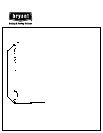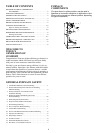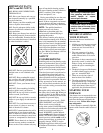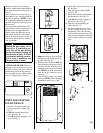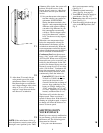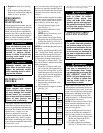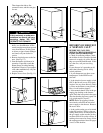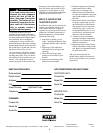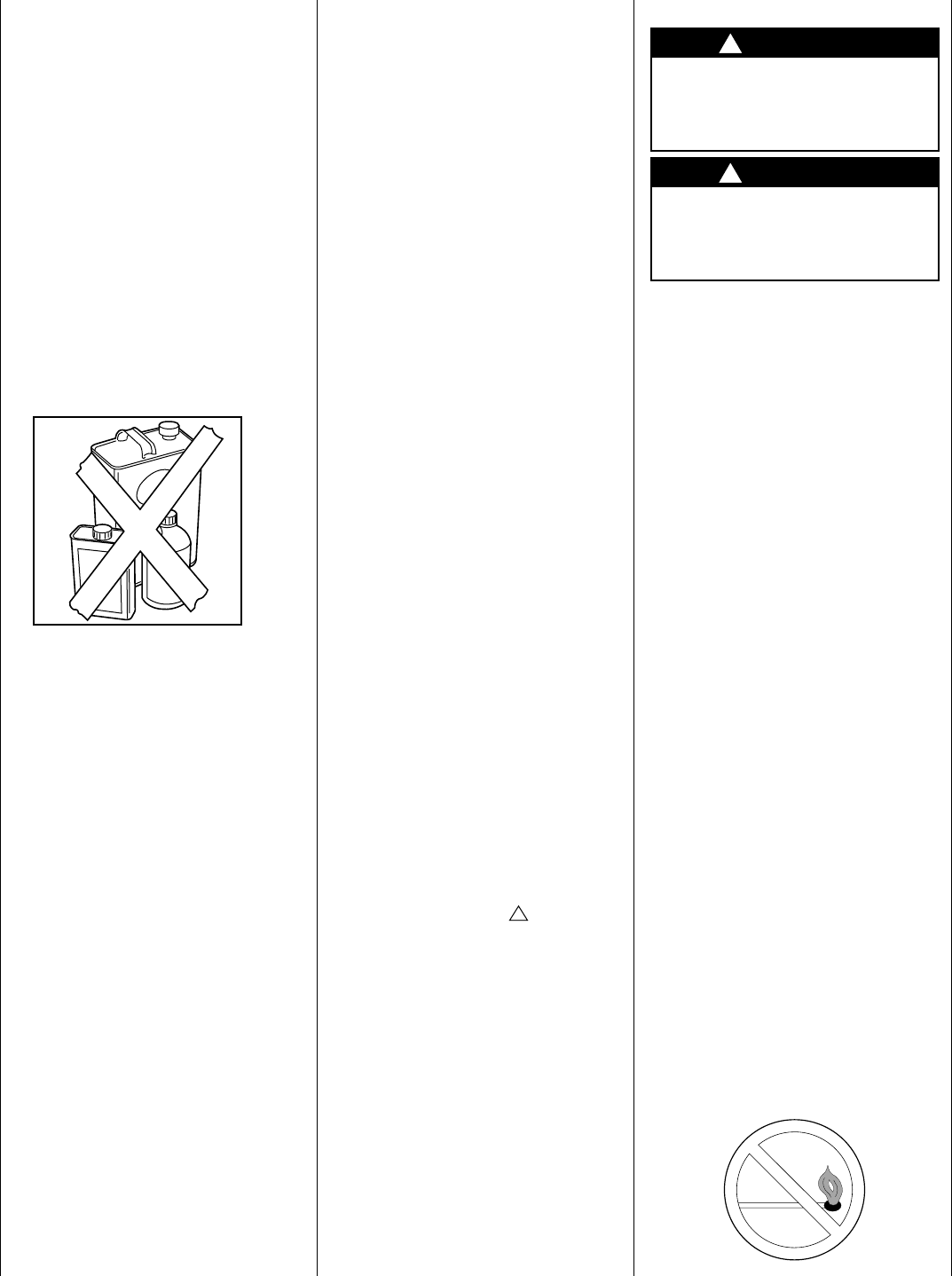
3
IMPORTANT FACTS
(DO’s and DO NOT’S)
•DO: READ AND UNDERSTAND
THIS MANUAL.
•DO: Have your furnace and vent sys-
tem inspected annually by a qualified
service technician.
•DO: Inspect your filter monthly and
clean or replace when needed.
•DO: Provide adequate airflow to the
furnace for efficient combustion and
safe ventilation.
•DO: Keep your furnace free and clear
of insulating material. Some materials
may be combustible. Examine the fur-
nace area when the furnace is installed
or when insulation is added.
3
•DO NOT: Enclose your furnace in an
airtight room or seal it behind solid
doors.
•DO NOT: Keep combustible materi-
als, gasoline, and other flammable liq-
uids or vapors around your furnace.
•DO NOT: Cover your furnace in any
manner.
•DO NOT: Store anything (including
trash or debris) near your furnace.
•DO NOT: In any way block or restrict
airflow around your furnace.
•DO NOT: In any way block or restrict
airflow to your supply air and return air
grills.
•DO NOT: Use your furnace room as a
broom closet or a place to store any
kind of chemical or cleaner.
•DO NOT: Contaminate the air used for
combustion of your furnace with any
kind of chemical or fumes. This could
also cause heat exchangers, metal vent
systems or components to deteriorate.
NOTE:
These chemicals or fumes are
present in many products around the
home, such as: water softener salts, any
type of household cleaning product,
any type of laundry product, adhesives,
paints, varnishes, paint strippers,
waxes and plastics, etc.
During remodeling be sure the com-
bustion air is fresh and uncontami-
nated. If these compounds are burned
in your furnace, the heat exchangers
and metal vent system may deteriorate.
NOTE:
The qualified installer or
agency must use only factory-
authorized re-placement parts, kits,
and accessories when modifying or
repairing this product.
This furnace contains safety devices
which must be manually reset. If the fur-
nace is left unattended for an extended
period of time, have it checked periodi-
cally for proper operation. This precau-
tion will prevent problems associated
with no heat, such as frozen water pipes,
etc. See “Before You Request a Service
Call’’ section in this manual.
SAFETY
CONSIDERATIONS
Installing and servicing heating equip-
ment can be hazardous due to gas and
electrical components. Only trained
and qualified personnel should install,
repair, or service heating equipment.
Untrained personnel can perform ba-
sic maintenance functions such as
cleaning or replacing air filters. All
other operations must be performed
by trained service personnel. Observe
safety precautions in this manual, on
tags, and on labels attached to the fur-
nace and other safety precautions that
may apply.
Recognize safety information: This is
the safety-alert symbol
. When you
see this symbol on the furnace and in
instructions or manuals, be alert to the
potential for personal injury.
Understand the signal words—DAN-
GER, WARNING, and CAUTION.
These words are used with the
safety-alert symbol. DANGER identi-
fies the most serious hazards which
will
result in severe personal injury or
death. WARNING signifies hazards
which
could
result in personal injury or
death. CAUTION is used to identify
unsafe practices which
would
result in
minor personal injury or product and
property damage. NOTE is used to
highlight suggestions which will result
in enhanced installation, reliability or
operation.
BEFORE STARTING
YOUR FURNACE
Examine the furnace installation to
determine that:
1. All flue gas carrying areas external
to the furnace (i.e. chimney, vent
connector) are clear and free of
obstructions.
2. The vent connector is in place,
slopes upward and is physically
sound without holes or excessive
corrosion.
3. The return-air duct connection(s) is
physically sound, is sealed to the
furnace casing, and terminates
outside the space containing the
furnace.
4. The physical support of the furnace
is sound without sagging cracks,
gaps, etc. around the base.
5. There are no obvious signs of
deterioration of the furnace.
6. The pilot and burner flames are in
good adjustment (by comparison
with pictorial sketches or drawings
of the main burner flame and, if
applicable, the pilot burner flame).
STARTING YOUR
FURNACE
Your furnace uses an automatic hot sur-
face ignition system to light the burners
each time the thermostat signals the
furnace to start.
Follow these impor-
tant safeguards:
• Never attempt to manually light the
burners with a match or other source of
flame.
4
!
WARNING
Do not keep combustible mate-
rials, gasoline, and other flam-
mable liquids or vapors
around your furnace.
WARNING
Fire Hazard! Failure to keep in-
sulation clear of furnace could
result in fire, personal injury,
or death.
!
!



